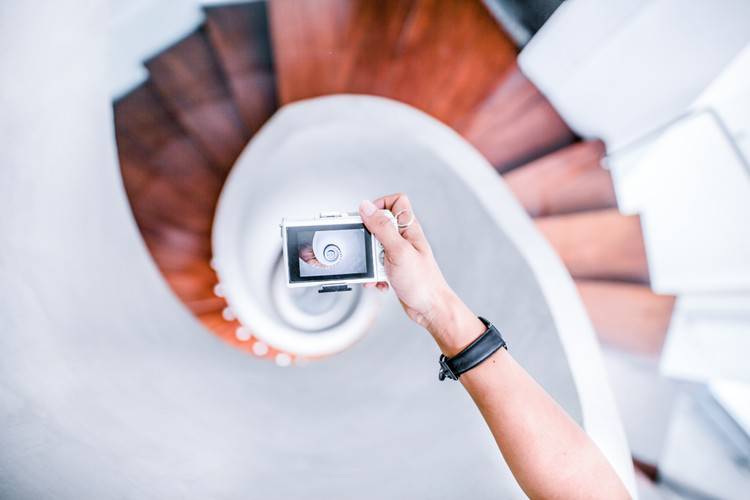In the ever-evolving landscape of photography, the role of SLR cameras seems to have been overshadowed by the advent of digital photography and DSLRs. Yet, photographers often find themselves wonderstruck by the vintage charm and artistic possibilities that SLR cameras bring to the table. Have you ever wondered about the mysterious mount on top of a DSLR camera? It's called the DSLR mount, and it holds the key to unlocking a world of creative potential. Join us on a journey as we delve into the captivating realm of DSLR mounts, exploring the differences between SLR and DSLR cameras, and uncovering the truth about interchangeability of lenses. Prepare to be captivated by the versatility and sheer artistic bliss that DSLR mounts offer to photographers, as we unravel the secrets behind this fascinating accessory. Get ready to enhance your photographic creativity and discover just how DSLR mounts can redefine your photography experience.
Do photographers still use SLR cameras?
In an era dominated by sleek, compact digital cameras, one might wonder if photographers still find value in using SLR cameras. The answer is a resounding yes. While digital technology has undoubtedly revolutionized the world of photography, many professional and amateur photographers still swear by the reliability and quality of SLR cameras. These cameras offer a tangible and hands-on experience that digital counterparts often fail to replicate. The precise control over settings, the optical viewfinder that provides a true representation of the scene, and the satisfying sound of the mirror flipping up and down are just a few of the cherished aspects of shooting with an SLR. Moreover, SLR cameras allow for the use of a wide range of lenses, making them highly versatile tools in the hands of a skilled photographer. So, despite the popularity of digital photography, SLR cameras continue to hold a special place in the hearts and gear bags of many dedicated photographers.
What is the mount on top of a DSLR called?
If you've ever wondered about that peculiar mount on top of a DSLR camera, you're not alone. That mount is called the hot shoe. The hot shoe is a standardized metal bracket with electrical contacts that allow for the attachment of various accessories, such as external flashes, video lights, microphones, and even GPS units. It serves as a means of communication between the camera and these external devices, enabling synchronization and control. The name "hot shoe" originates from the fact that it typically carries a small electrical charge to trigger a flash unit's synchronization mechanism. Its design has stood the test of time and is largely uniform across different camera brands, making it a widely compatible platform for attaching a multitude of accessories that can expand the functionality and creative possibilities of your DSLR camera.
What is the difference between SLR and DSLR cameras?
To understand the difference between SLR and DSLR cameras, it's essential to grasp the concept of film versus digital sensors. SLR (Single-Lens Reflex) cameras utilize film as a medium to capture images. They employ a mirror mechanism that reflects light coming through the lens to the viewfinder, providing the photographer with an optical preview of what the final image will look like. On the other hand, DSLR (Digital Single-Lens Reflex) cameras house an image sensor that directly captures the light passing through the lens, converting it into a digital format. This fundamental difference gives DSLRs the advantage of immediate image review, the ability to shoot in various lighting conditions without changing film rolls, and the convenience of storing a large number of images on memory cards. Additionally, DSLRs offer video recording capabilities, which are absent in traditional SLR cameras. So while both SLR and DSLR cameras share the reflex mirror design and interchangeable lens systems, the key difference lies in the medium used for image capture and the technological advancements of digital sensors.
Are SLR and DSLR lenses interchangeable?
One of the advantages of SLR and DSLR cameras is their compatibility with a range of lenses. In most cases, SLR and DSLR lenses are interchangeable. This means that lenses designed for SLR cameras can generally be mounted on DSLR cameras and vice versa, as long as they have a suitable lens mount. However, there are some considerations to keep in mind. Firstly, compatibility depends on the specific lens mount used by the camera manufacturer. Different brands have their own proprietary mounts, and while some lenses may be cross-compatible between brands with the use of adapters, it's crucial to research compatibility before attempting to pair lenses from different systems. Additionally, when using lenses originally designed for SLR cameras on DSLR bodies, certain limitations may apply due to differences in technology and lens requirements. For example, autofocus systems may not function optimally, and exposure metering might be less accurate. Nonetheless, with the right adapters and understanding of compatibility issues, photographers can explore a vast array of lenses to achieve their desired results, allowing for flexibility and creative freedom in their craft.

What is DSLR mount?
The DSLR mount is a vital component that forms the interface between the camera body and the interchangeable lens. It refers to the mechanical connection that allows lenses to be attached securely to the camera. DSLR mounts come in various designs, each specific to the camera manufacturer. Some popular DSLR mount systems include the Nikon F mount, Canon EF mount, Sony E mount, and Pentax K mount, among others. The mount serves multiple functions, including ensuring accurate alignment of the lens with the camera's image sensor, facilitating communication between the camera and lens for features like autofocus and aperture control, and providing the necessary electrical contacts for data transmission and power supply. A well-designed DSLR mount not only guarantees precise and stable attachment of lenses but also enables compatibility with a wide range of lenses and accessories, offering photographers flexibility and creative versatility in their photographic pursuits.
Further Inquiries about DSLR Mount
Using lenses from different DSLR brands on your camera is possible through the use of lens adapters. These adapters serve as a bridge between the lens and the camera body, allowing for compatibility between different lens mounts. However, it's important to note that while adapters can physically connect the lens to the camera, certain limitations may apply. Auto-focus functionality might be compromised, and features specific to the lens or camera brand may not fully work. Additionally, compatibility and performance can vary depending on the specific combination of lens and adapter. It is advisable to do thorough research, read reviews, and understand the potential limitations before attempting to use lenses from different brands on your DSLR camera.
Specialty DSLR mounts, like macro or tilt-shift mounts, offer unique benefits for specific types of photography. Macro mounts, for example, are designed to optimize close-up photography, allowing you to achieve higher magnification and sharper focus on small subjects. These mounts typically feature adjustable extension tubes or bellows systems that enable precise control over the distance between the lens and the camera sensor. Tilt-shift mounts, on the other hand, allow for the manipulation of perspective and depth of field in architectural and product photography. They provide the ability to tilt the lens, creating a selective focus effect, and shift the lens, correcting perspective distortion. These specialty mounts offer photographers expanded creative possibilities in their respective fields of photography, enhancing their ability to capture intricate details or create unique visual effects.
When using older SLR lenses on modern DSLR cameras, compatibility issues may arise due to technological differences and changes in lens mounts over time. Some older lenses might not have electronic contacts, which means autofocus and aperture control may be manual. Exposure metering and camera-controlled features may also be limited or non-functional. Additionally, mechanical compatibility can be an issue, as some older lenses might not physically fit or align properly with modern DSLR mounts. However, there are often workarounds available, such as using lens adapters or investing in modern versions of popular vintage lenses with updated mounts. It's crucial to research compatibility and consider factors like lens age, mount type, and intended usage before attempting to use older SLR lenses on modern DSLR cameras.
In conclusion, the world of photography continues to embrace the use of SLR cameras alongside their digital counterparts. The hot shoe, located on top of DSLR cameras, serves as a gateway to a multitude of accessories, expanding the creative possibilities for photographers. While SLR and DSLR cameras share similar designs, the key difference lies in the use of film versus digital sensors, allowing DSLRs to offer immediate image review and video recording capabilities. Furthermore, the interchangeable nature of SLR and DSLR lenses provides flexibility and opens doors to a vast array of photographic opportunities. The DSLR mount, a crucial component, ensures stable attachment and compatibility with different lenses, enabling photographers to explore their creativity with ease. Despite technological advancements, many photographers find value in the tangible experience and unique qualities that SLR cameras bring to their craft, proving that the world of photography truly embraces the best of both digital and traditional realms.



